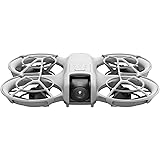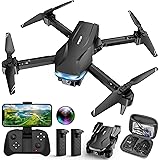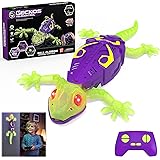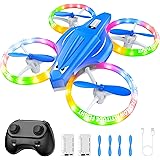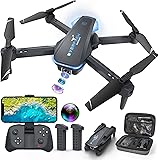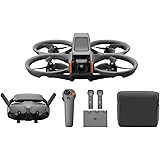Building a robust and high-performing multirotor aircraft presents both exciting challenges and immense satisfaction. In the accompanying video, an insightful introduction to a custom Happymodel HMF Y600 tricopter build is provided, showcasing its core components and initial flight performance. This particular build emphasizes durable construction and advanced flight control systems, offering a compelling example for enthusiasts navigating their own projects.
1. **Understanding the Tricopter Advantage: The Happymodel HMF Y600 Foundation**
The Happymodel HMF Y600 tricopter frame is noted for its sturdy design, predominantly constructed from carbon fiber. This material is widely chosen in high-performance drone applications due to its exceptional strength-to-weight ratio and inherent vibration-dampening qualities. Such properties are crucial for both flight stability and protecting sensitive onboard electronics, making the HMF Y600 an excellent choice for a durable build. Carbon fiber components observed include the propellers, motor mounts, arms, landing gear, and gimbal rails. The integration of 10-millimeter rails, spaced 60 millimeters apart (eye-to-eye), is specifically designed to accommodate various gimbals and accessory mounts, suggesting a focus on aerial photography or videography capabilities for this Happymodel HMF Y600 tricopter.
2. **Integrated Power Distribution and Motor Systems**
An often-underestimated aspect of multirotor construction is the power distribution system. On the HMF Y600 tricopter, the lower center plate conveniently doubles as a power distribution board (PDB). This design choice streamlines the wiring process, reducing clutter and potential points of failure by providing direct soldering tabs for Electronic Speed Controllers (ESCs), main power cables, and auxiliary accessories. This clean integration mirrors advanced designs found in other popular frames, simplifying assembly and maintenance for the HMF Y600. The ESCs selected for this build are ReadyToFlyQuads 30-amp units running SimonK firmware, known for their reliability and responsiveness, capable of handling up to 4S LiPo batteries. Paired with SunnySky 2216 900Kv motors and 12-inch by 5 carbon fiber propellers, this configuration is optimized for efficient lift and extended flight durations, a key performance metric for any tricopter build.
3. **Precision Control and Landing Gear Mechanics**
A distinctive feature of tricopters is their yaw control mechanism, which relies on a servo-controlled tilting motor at the rear. For the Happymodel HMF Y600 tricopter, a Hitec HS-565MD metal gear digital servo is employed. The choice of a metal gear servo is paramount for durability, as the yaw mechanism experiences significant stress during flight maneuvers. Digital servos, like the HS-565MD, offer superior precision and holding power compared to analog counterparts, contributing to crisp and stable yaw control. Complementing the robust frame are taller, retractable landing gears. Retractable landing gear offers practical advantages, notably providing an unobstructed view for onboard cameras when deployed and improving aerodynamic efficiency during flight when retracted. This thoughtful inclusion further underscores the build’s potential for professional aerial imaging tasks.
4. **Advanced Communication and Flight Management with Eagle Tree Vector**
The control link for this HMF Y600 tricopter is established via a Hitec Optima 9 receiver, which transmits data to a Hitec Aurora 9 radio. The Optima 9 receiver boasts telemetry capabilities, allowing crucial flight data such as battery voltage and signal strength to be monitored in real-time by the pilot. At the heart of the flight management system is the Eagle Tree Vector flight controller, a highly versatile unit known for its comprehensive feature set. This controller is equipped with GPS for functionalities like position hold and return-to-home, along with a current sensor for accurate power consumption monitoring. A significant advantage of the Eagle Tree Vector is its built-in On-Screen Display (OSD), which overlays critical flight parameters directly onto the FPV video feed. Its adaptability across various multirotor and fixed-wing aircraft types also highlights its sophisticated programming and robust design, making it a powerful brain for the Happymodel HMF Y600 tricopter.
5. **Immersive FPV and High-Definition Imaging Capabilities**
For an immersive flying experience and high-quality aerial footage, this Happymodel HMF Y600 tricopter build integrates a dual-camera setup. The FPV camera, a 700 TVL unit, is fitted with a 2.1-millimeter wide-angle lens, providing an expansive 150-degree field of view. This wide perspective is invaluable for situational awareness during FPV flights, helping pilots navigate complex environments. For capturing cinematic high-definition footage, a Mobius camera, also featuring a wide-angle lens, is mounted. Video transmission is handled by a Boscam TS832 transmitter, operating on the 5.8 gigahertz band with 32 channels and a substantial 600 milliwatt power output. This robust transmitter, coupled with a quad-framed cloverleaf antenna, ensures a strong and stable video link, crucial for both safe FPV flying and capturing uninterrupted video streams from the HMF Y600 tricopter.
6. **Optimizing Flight Duration: Battery Configurations and Performance**
One of the most critical aspects of any multirotor build, especially for aerial photography or long-range exploration, is flight duration. The Happymodel HMF Y600 tricopter demonstrates impressive flight times with various battery setups. With a single 8000mAh 3S ReadyMadeRC battery, the tricopter achieved over 15 minutes of flight. To further extend endurance, a parallel configuration of two Multistar 3S 5200mAh batteries was employed, effectively doubling the capacity to 10400mAh. This parallel setup, facilitated by a dedicated adapter, resulted in a remarkable 18 minutes of flight time. These figures underscore the efficiency of the chosen motor and propeller combination, along with the lightweight yet sturdy carbon fiber frame of the HMF Y600. Achieving such extended flight times is paramount for complex missions, providing ample opportunity for capturing extensive aerial footage or covering significant distances without the need for frequent battery swaps.



